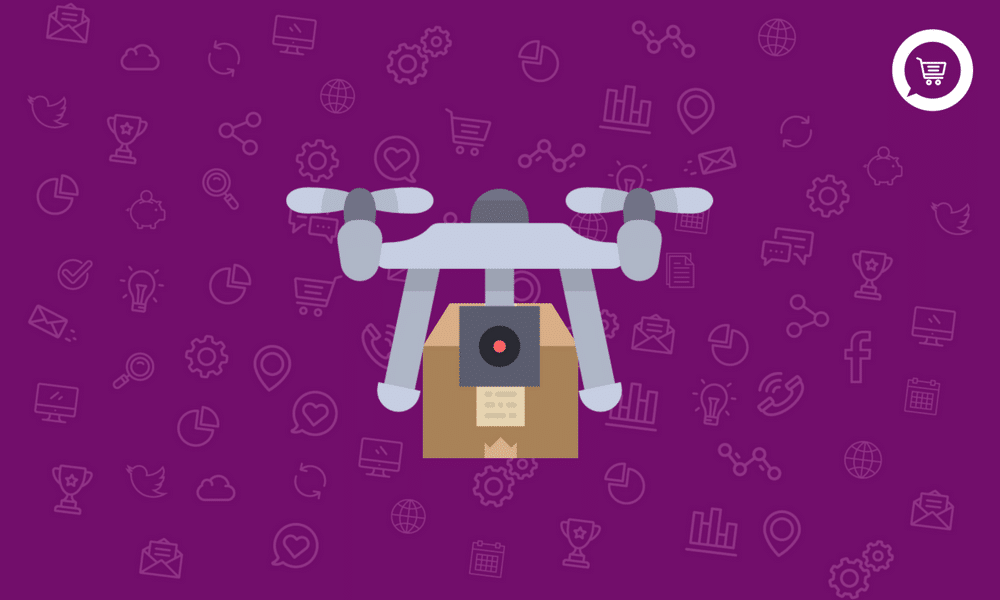There’s a ton of innovation happening right now in the field of logistics. In particular, robotics and drone technology are both poised to start a revolution in the retail world. Workers need to unpack, organize, and ship a huge variety of goods for retailers and e-commerce businesses every day. This is an inefficient process, with individual items being repeatedly hand-carried across huge warehouses by individual workers.
Robots are already being used by Amazon, Walmart, and many other major retailers for warehouse management. In addition, new innovations for last-mile delivery are just around the corner. Your company should keep a close eye on robots in the logistics industry. This technology is only going to get more effective and less expensive over time.
Why Logistics is the Center of Attention
There are several market forces pushing logistics technology forward. For one thing, employee wages are going up, creating pressure for retailers to reduce the size of their staff.
It’s increasingly difficult to manage your warehouse within a reasonable budget. Robots can save you money in the long-run by reducing the amount of manpower needed to handle your logistics. For example, a $40,000 robot with $5,000 per year of maintenance costs will cost much less than an employee with a $30,000 salary over a five year period.
At the same time, new job opportunities open up to operate and maintain the robots. In many instances, these new jobs are higher paying than the old ones. Everybody can win when robots enter the logistics process.
Technological advancements in other fields are bleeding into the logistics world. Artificial intelligence and 3D printing are two examples of fields of study that can directly benefit warehouse operators. As Silicon Valley startups and other tech groups work on these ideas, they will lead to new logistics solutions.
Logistic Innovations
There was a big splash in the robotics world when Amazon purchased Kiva Systems in 2012 for $775 million USD. By 2014, Amazon was using robots in warehouses to help with the holiday sales rush.
Where Amazon goes, other retailers follow. There are now several major brands using robotics-fueled technology to improve logistics processes.
For one example, look at Walmart. With more than 150 distribution centers around the USA, they are in dire need of improved warehouse efficiency. Walmart’s approach is different from Amazon’s. Rather than focus on robots, they use drones to improve warehouse inventory tracking.
Walmart’s drones are able to fly up and down the 40-foot-tall warehouse with ease, checking inventory at a rate 30x faster than the average human can do. This is a huge boost in productivity that saves Walmart many millions of dollars per year.
Above all else, robots are saving workers a lot of walking around. Fetch Robots, a San-Jose-based robotics company, creates machines for this purpose. Workers can pull items off of shelves and toss them to the robot, which then moves to the other side of the warehouse to drop them off.
Current Roadblocks in Logistic Technology
In a perfect world, robots could do the majority of logistic work. They would drive goods to the warehouse, unload the truck, organize everything, and then ship products to customers when needed. However, there are a few roadblocks that stand in the way of such an automated system.
Safety is the biggest issue. While robots can accomplish a lot of work very quickly, they lack common sense. If a large hunk of metal is moving around a warehouse, there are safety concerns for any humans in the area.
Fine motor skills are another huge advantage that humans have over robots. Technology needs to move forward to teach robots to work with much smaller and more delicate items. Once robots can intuitively load and unload shelves in a warehouse, logistics will become much easier.
How to Learn About Logistics: Deliver 2

The Deliver 2 Conference is Europe’s premium conference about the future of logistics. Held this year in Berlin, the 27th and 28th of June, over 450 e-commerce leaders will be present at this event, each with different fields of expertise. You can be sure that you’ll learn valuable lessons and make key network connections when you go to this event.
The two day conference is designed to maximize interpersonal engagement and collaboration. That’s why there are more than 3,000 one-on-one meetings scheduled between service providers, managers, and e-commerce gurus at the event. You won’t just listen to people talk, you will actually engage with the crowd and get into the action.
This year’s four keynote speakers have yet to be announced. However, last year’s star roster gives you an idea of what to expect: Xavier Better (Luxembourg’s Prime Minster), Phillipe Hémard (Amazon Europe Logistics VP), Irmfried Schwimann (European Commission Deputy DG for SMEs), and Keith Cornell (Starship CCO). Who will speak in 2017? Keep an eye on the website for updates.
This event offers workshops on key ideas in the logistics world. Last year saw talks centered around last mile innovation, standardization, packing machines, and much more. This year’s topics will be announced soon.
If you want to be up-to-date with logistics trends, you should attend the Deliver 2 Conference. It’s an amazing experience where you can learn from top professionals and make new friends in the process.
The logistics field has seen incredible innovation over the last decade. Who knows what the remainder of the 2010’s will hold?
You can’t afford to fall behind the technological curve. The businesses who do the best job of integrating new technology into their warehouses will earn the most money. Over time, as robots become more common, the first businesses to use this technology will have a huge advantage over the competition.
Interested in visiting the Deliver 2 Conference? You can check out more information on their website





